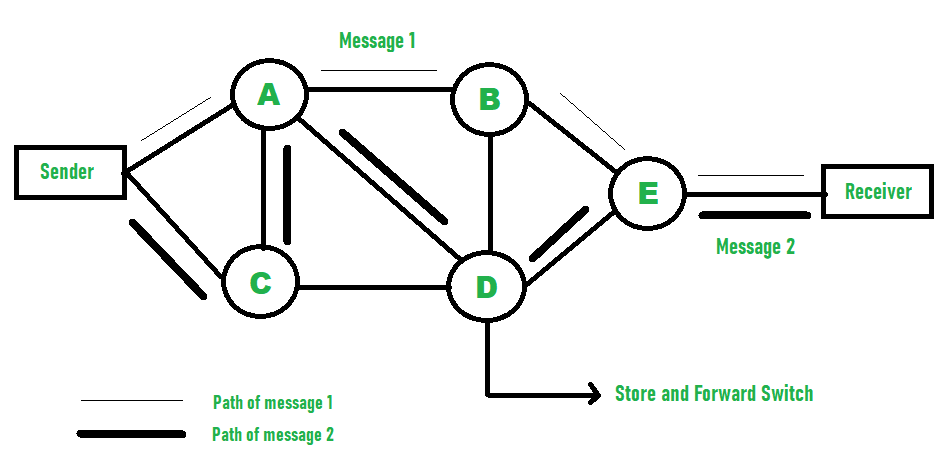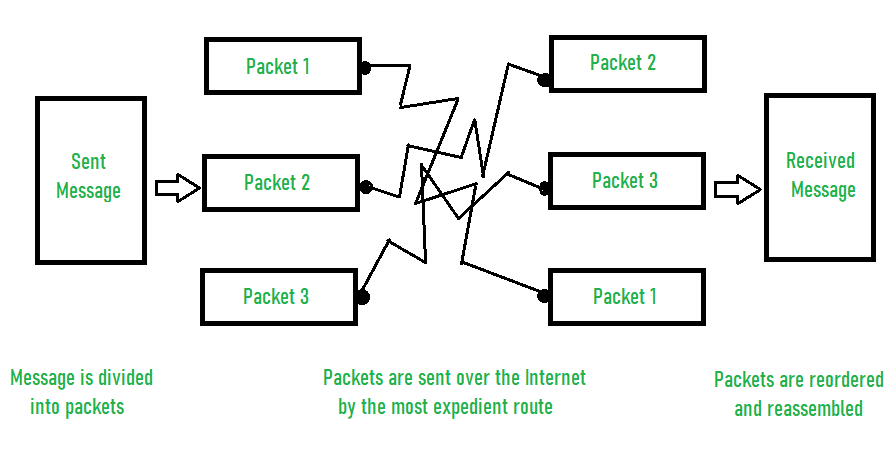Difference between Message and Packet Switching
Last Updated :
29 May, 2020
1. Message Switching :
In this technique, the entire message is transmitted without any break from one node to another. It firstly stores and then forwards information that requires more time. Due to this, the access time is increased. No direct link is present between the sender and the receiver.
Example of message switching –

2. Packet Switching :
In packet switching, information is transferred in the form of data packets between the sender and the receiver. These packets are forwarded one by one from the sender to the receiver. Each packet is associated with a Header. Then, these packets then reassembled into the original message. This improves the performance as the time require to access the data packet is reduced. Due to this, the overall performance of the network is improved.
Example of packet switching –

Difference between Message and Packet Switching :
| Message Switching |
Packet Switching |
| A complete message is passed across a network. |
Message is broken into smaller units known as Packets. |
| In this, computer language used is ASCII, baudot, morse. |
In packet switching, binary type is used. |
| In message switching there is no limit on block size. |
Packet switching places a tight upper limit on block size. |
| Message exist only in one location in the network. |
Parts i.e. packets of the message exist in many places in the network. |
| Example: Hop-by-hop Telex forwarding and UUCP(UNIX-to-UNIX Copy Protocol) |
Example: Frame Relay, IP, and X. 25 |
| Physical links are allocated dynamically. |
Virtual links are made simultaneously. |
| Access time is reduced due to increase in performance as packets are stored in disk. |
Packets are stored in main memory. |
Share your thoughts in the comments
Please Login to comment...